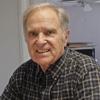The cappa magna, according to the Random House dictionary is "ceremonial cloak having a long train and a silk or fur-lined hood, worn by cardinals, bishops, and certain other dignitaries." Ordinarily scarlet for cardinals and purple for bishops, the train has varied in length and, it is reported, was originally used as a covering for the back end of a horse.
 We have not seen these around much since the mid-1960s when the Vatican II church bishops intentionally brought the Eucharistic celebration closer to the people, eliminating some of the pomp the church inherited from Medieval European royal court life. In place the bishops introduced a theology that stressed the importance of baptism and developed the idea that this primary sacrament bestowed rights and human dignity shared by all Catholics, spawning liturgies that stressed community and familial relations. Gone were most of the images of monarch church princes. Except, of course, in the liturgies of Archbishop Marcel Lefebvre, who rejected the reforms of Vatican II, and among his followers.
We have not seen these around much since the mid-1960s when the Vatican II church bishops intentionally brought the Eucharistic celebration closer to the people, eliminating some of the pomp the church inherited from Medieval European royal court life. In place the bishops introduced a theology that stressed the importance of baptism and developed the idea that this primary sacrament bestowed rights and human dignity shared by all Catholics, spawning liturgies that stressed community and familial relations. Gone were most of the images of monarch church princes. Except, of course, in the liturgies of Archbishop Marcel Lefebvre, who rejected the reforms of Vatican II, and among his followers.
That is, until relatively recently.  And some photos seemed to make a point.
And some photos seemed to make a point.
Earlier this month images began to circulate on the internet -- and I posted several on a blog -- showing Cardinal Franc Rodé, Prefect of the Congregation for Religious, wearing a cappa magna at the ordination of six deacons into the Institute of Christ the King Sovereign Priest, which used the Tridentine Mass rite.
Pope John Paul loosened the old rite restrictions, and in 2007, Pope Benedict informed Catholics who wanted to follow the pre-Vatican II rite they no longer needed to seek the permission of their local bishop. Until then some bishops refused to allow these liturgies in their dioceses, saying that to do so would be divisive.
By most accounts, the Tridentine rites attract a slender percentage of the Catholic population, which finds them uplifting and inspiring. Within and around these liturgies, once again, comes images of a return to a much greater separation of priest and layperson, of "king" and his "subjects." It is difficult to miss this notion when a prelate puts on a twenty-five foot long cappa magna and young men, walking behind him, hold it off the ground.
Rodé is not the only Vatican prelate-patron of the Institute of Christ the King Sovereign Priest. Archbishop Raymond Burke, newly appointed to the Vatican Congregation of Bishops and prefect of the Apostolic Signatura, the church’s highest court, is also a supporter of the organization.
On June 15, 2007, His Grace, as he was referred to, ordained two priests in the Cathedral-Basilica of St. Louis. It marked the first time priestly ordinations of the Institute of Christ the King were conducted in the United States.
For those interested in seeing more cappa magna photos,you can go to the Dappled Photos Web site.
There needs to be room for all of us and, in this instance, we see a hierarchy that is encouraging greater Catholic liturgical pluralism. Makes one wonder.




